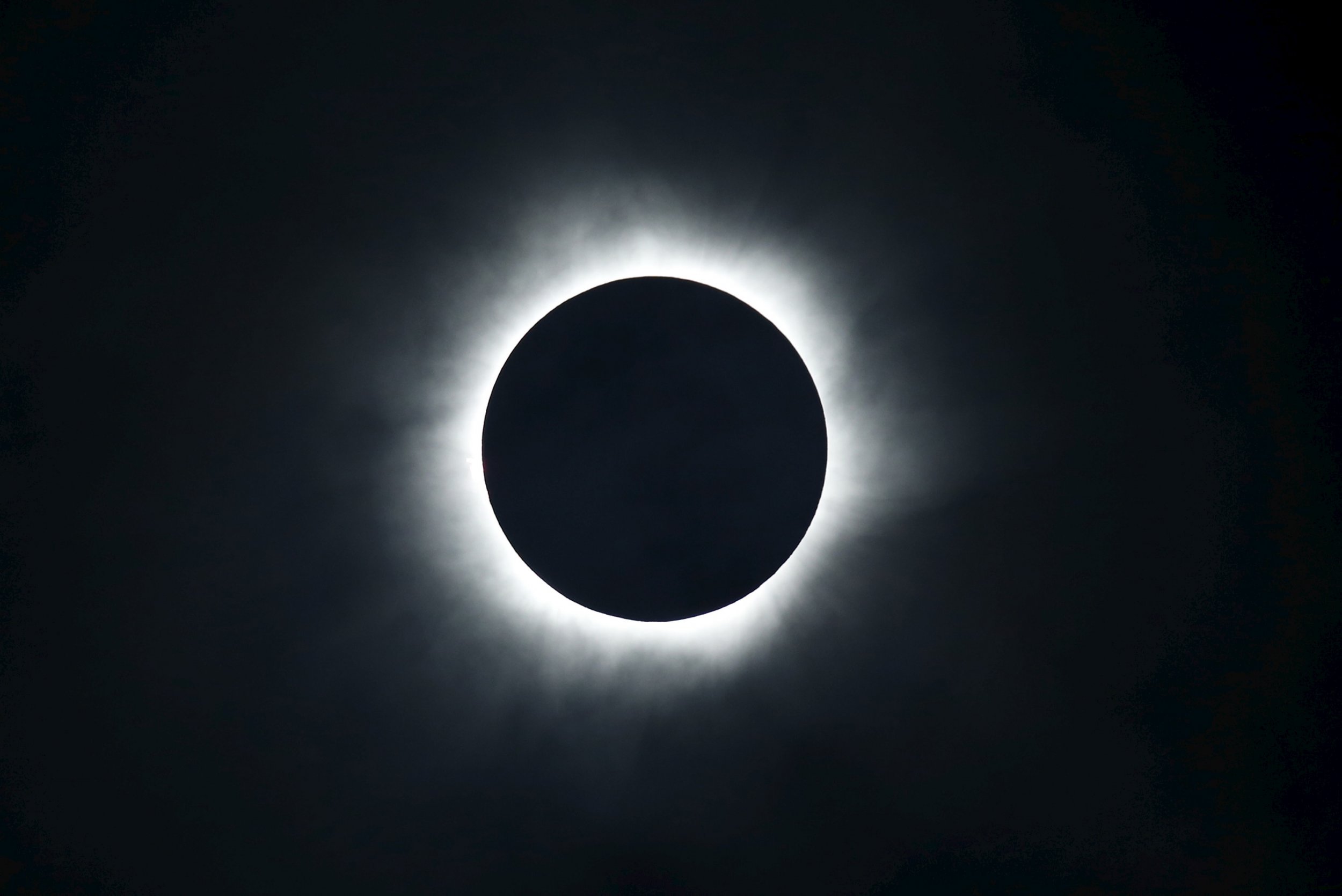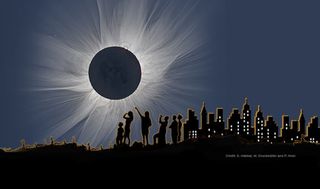

Sometimes eclipses are only visible from remote locations or from out at sea, making it difficult for very many people to be in the path of totality.

Why is this eclipse special?īecause of the orbital dynamics involved, the moon’s shadow falls on different parts of Earth during each total solar eclipse.
#HOW TO SEE THE ECLIPSE SOLAR 2017 HOW TO#
What is an eclipse? Learn more about how solar eclipses happen, the four types of eclipses, and how to view the sun safely if you're within the path of totality. When the moon is farther away, its apparent size isn’t large enough to completely cover the sun, and viewers will see what’s known as an annular eclipse, when a “ring of fire” surrounds the dark lunar disk.Ī total solar eclipse happens somewhere on Earth once every year or two. What’s more, the moon’s orbit is slightly elongated, and the distance between the lunar orb and Earth changes over time. Such an arrangement does not occur every month because the moon’s orbit is tilted compared to Earth’s, so that the lunar disk and the solar disk don’t always cross paths. This in turn means that eclipses can only happen when the moon is precisely aligned between Earth and the sun. People in the lighter part of the shadow, or the prenumbra, will see a partial eclipse. To see a total eclipse, you need to be in the darkest part of this shadow, known as the umbra. What exactly is a total solar eclipse?Ī total eclipse of the sun happens when the moon completely blocks the visible solar disk, casting a shadow on Earth. Here’s everything you need to know to be part of this incredible sky show. While many people will be traveling to be sure they can see the moon fully blot out the sun, viewers in other parts of the U.S., as well as the rest of North America and parts of Central and South America, will get to enjoy a partial eclipse, when the moon appears to take a bite out the sun. Join us on August 21 to hear from experts around the country, see stunning photos-including your own-and be among the first to see the eclipse. Sitemap This page was generated in 0.Nat Geo and Airbnb are bringing you total solar eclipse coverage #LiveFrom coast to coast.

James Holzhauer Calls Out "Horrifying" Tweet.Sleep Like a Baby With These Weighted Blankets.15 Best Mother's Day Flowers to Gift Mom.J.Lo's Abs Look Insane In This Crop Top.5 Dad Jokes To Keep the Whole Family Laughing.4 Peanut Butter–Candy Bar Thumbprint Cookies.3 Plant These Easy-to-Grow Flowers This Spring.2 Celebrate Mardi Gras with These Recipes.Today's Top Stories 1 Makeover Takeover: Colonial Comeback.You may be able to find more information about this and similar content at piano.io This content is created and maintained by a third party, and imported onto this page to help users provide their email addresses. Now you just need a pair of eclipse viewing glasses and you'll be ready to watch this incredible sight.īUY NOW : $15 for 3, CPPSLEE Solar Eclipse Glasses, Ĭarly Breit Web Editorial Fellow Carly Breit is a freelance writer who loves to write about health, wellness, and strong women. And if you're outside this path of the total eclipse, you can also use the tool to determine the city with the best view closest to you. You won't want to miss seeing the eclipse at its peak time-there won't be another total solar eclipse until 2024. From a 70-mile stretch between Salem, Oregon and Charleston, South Carolina, the total solar eclipse will be seen. The moon will block all of the light from the sun-but only for people in the "path of totality," according to NASA. You may be able to find the same content in another format, or you may be able to find more information, at their web site.įor a moment, when the moon moves between the Earth and the sun, everything will go completely dark.
#HOW TO SEE THE ECLIPSE SOLAR 2017 ZIP#
All you have to do is enter your zip code, and it will tell you exactly what time the moon will cover the most of the sun. You'll have to wait to see the eclipse, but thanks to this easy tool from Vox, you can get prepared for the historic event. No matter where you'll be, you'll get to see at least some of this amazing event. It's been 99 years since the last total solar eclipse, and on August 21, everyone in North America will finally get to see another one.


 0 kommentar(er)
0 kommentar(er)
